June 16th, 2025 - Whale Watching
We got up early, filled and emptied the camper, filled up with gasoil, and then arrived right on time at the meeting point of the whale watching company. There, we were picked up by a minibus.
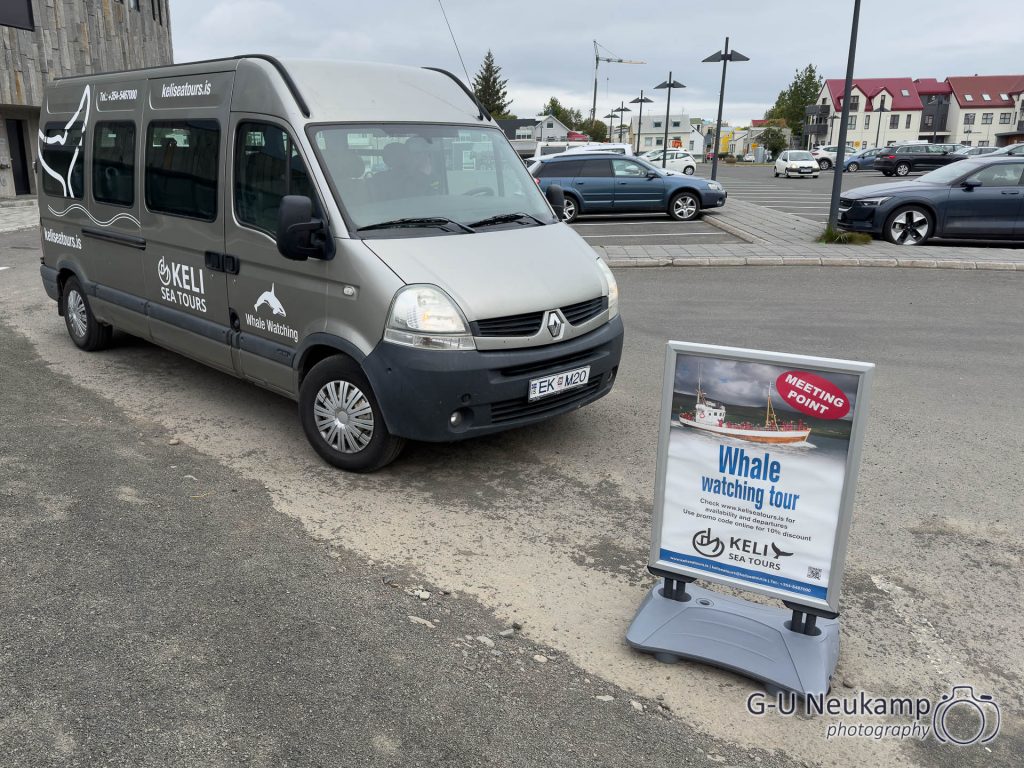
The whale watching company Keli Sea Tours is located further outside the city on the fjord, and the drive there took about 30 minutes. The village we drove to is called Hauganes and is located up the fjord towards Dalvík. Once we arrived, we realized that we could have easily driven here in our camper and then boarded the boat. There is also a campground there. Next time we’ll be smarter. Before the boat trip, we had to get properly dressed. The overalls provided keep you nice and warm and are also designed to keep you alive if you fall overboard, at least until you are rescued.
Our boat - a former fishing boat - was simply called “Whales,” which was already promising:
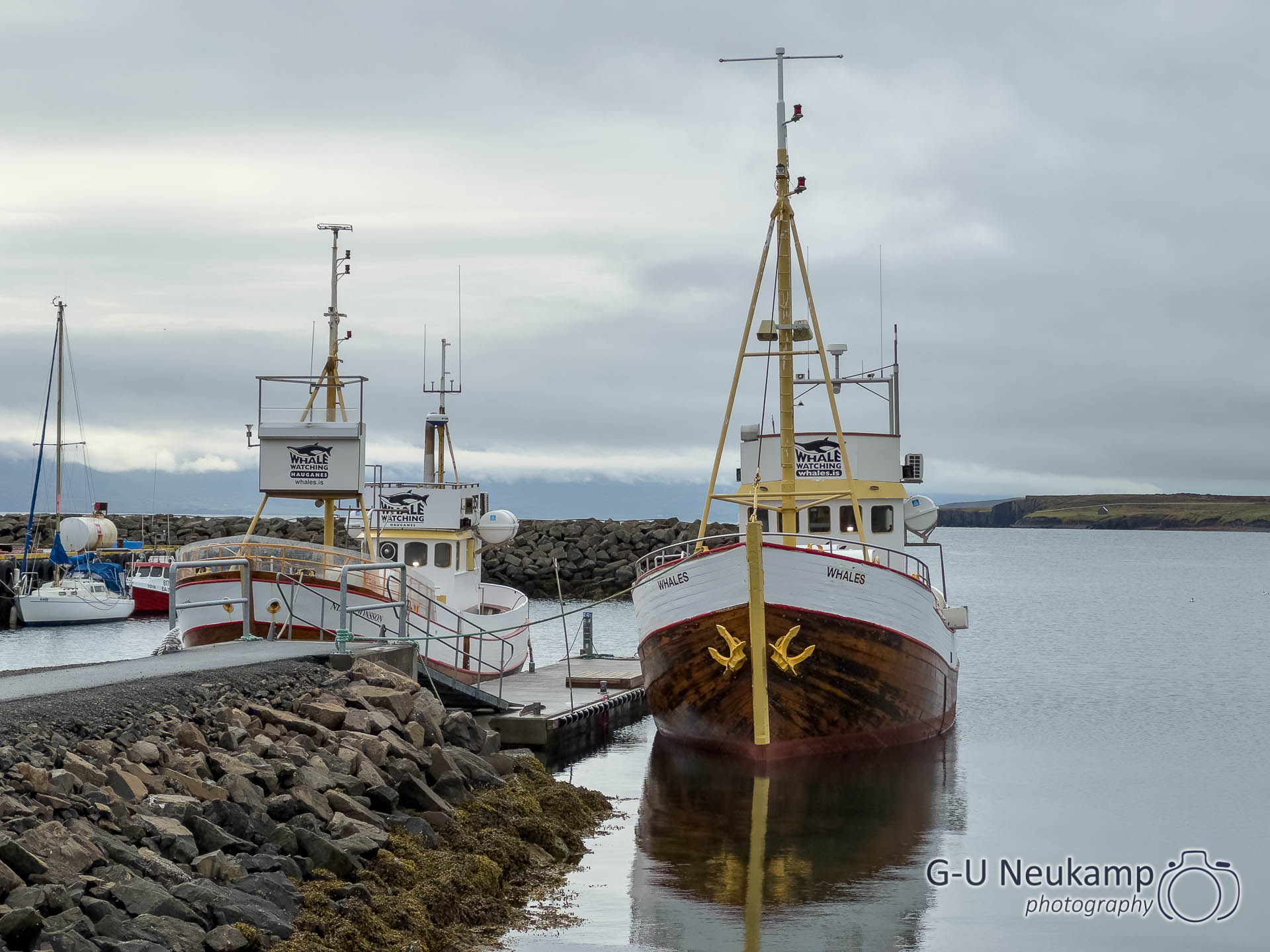
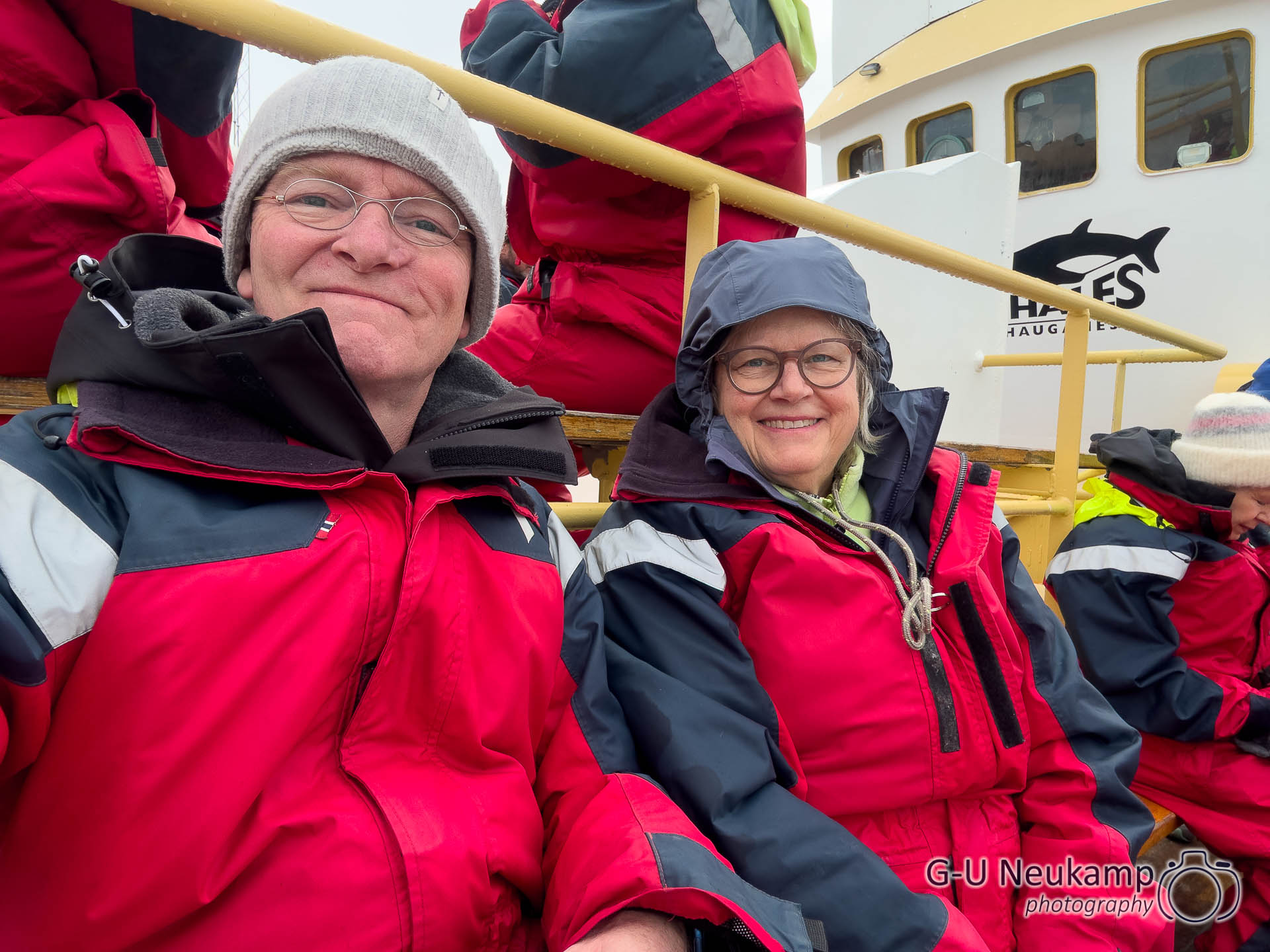
After a short drive, the first humpback whales appeared. Impressively large animals. Here are some photos from the tour:
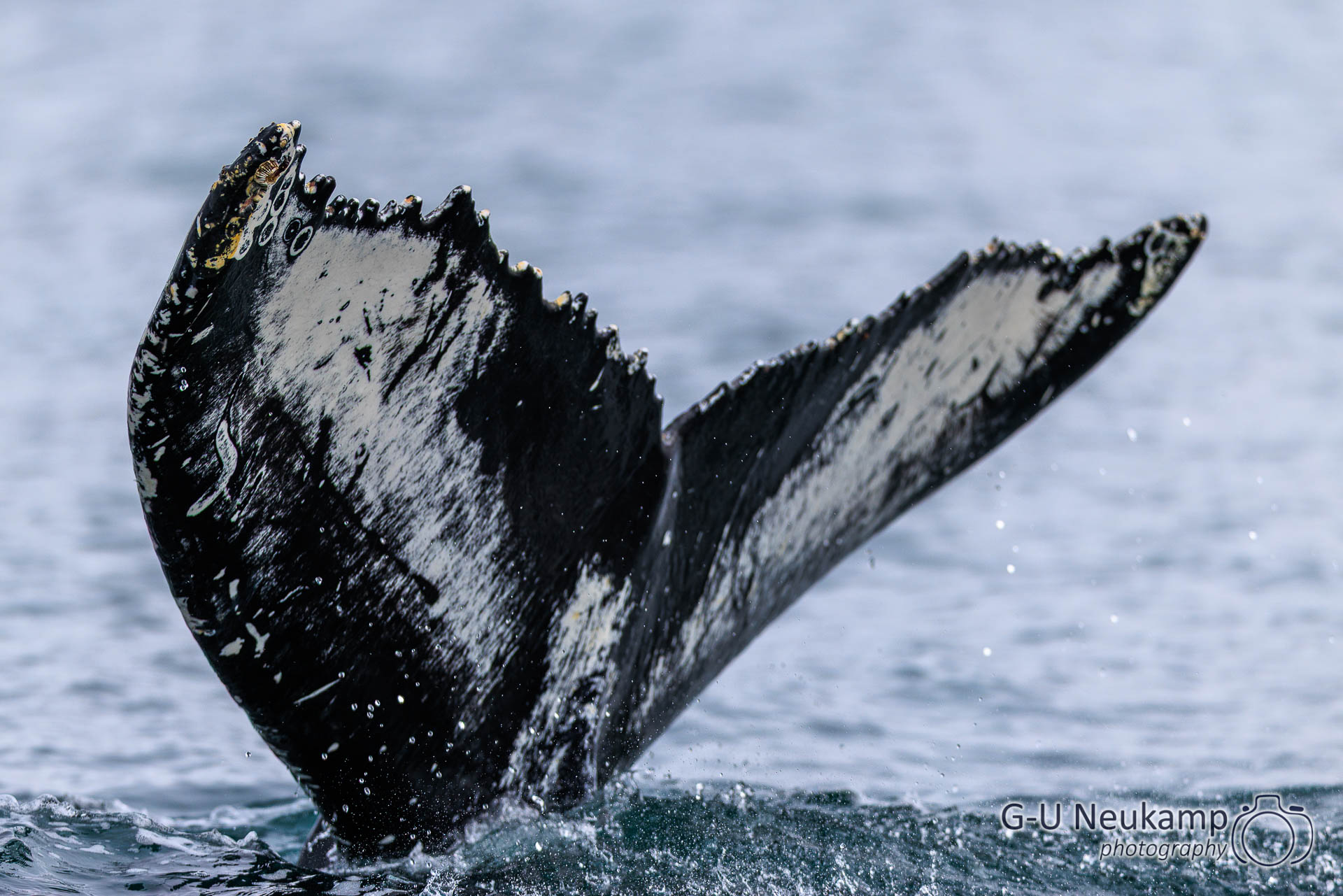
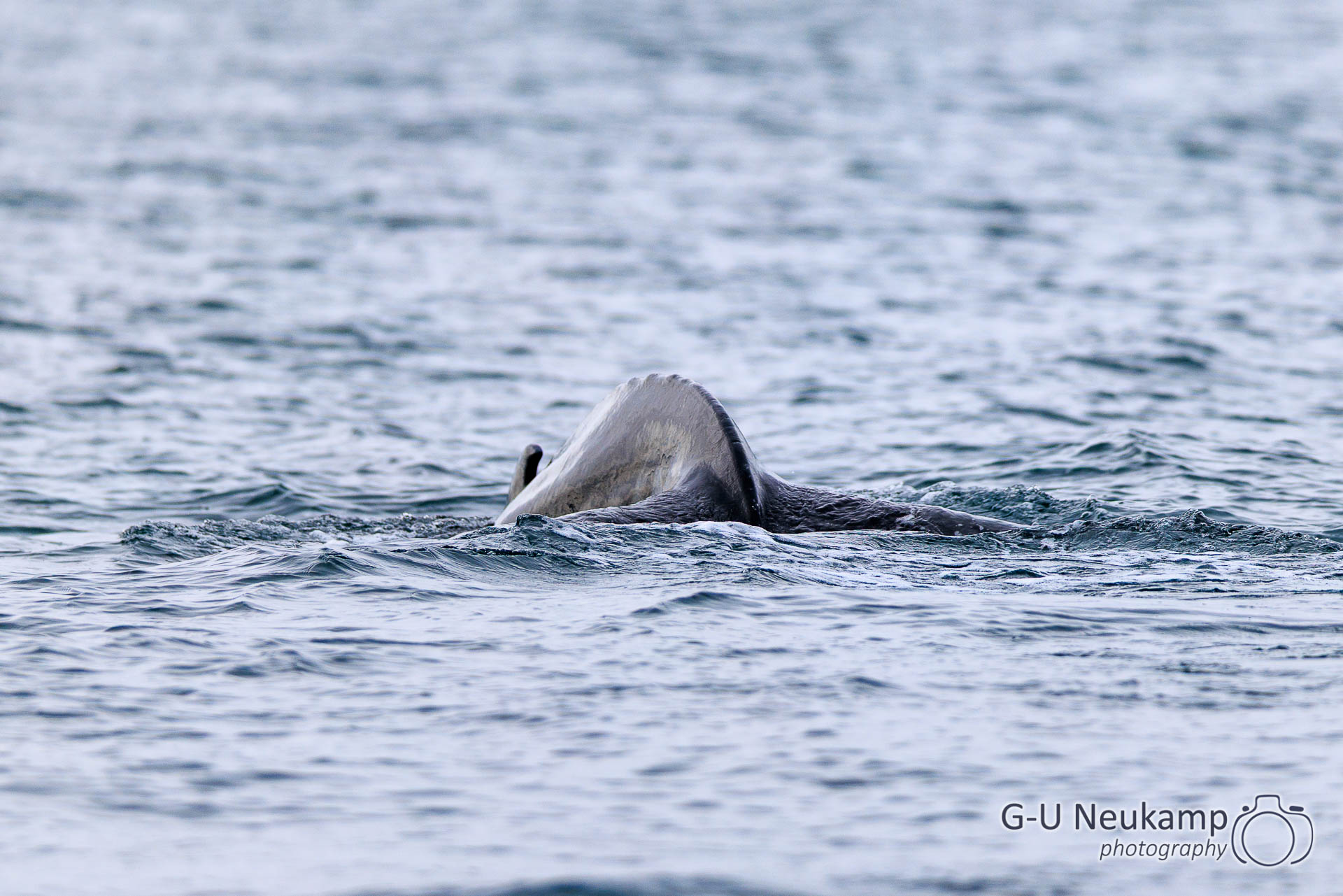
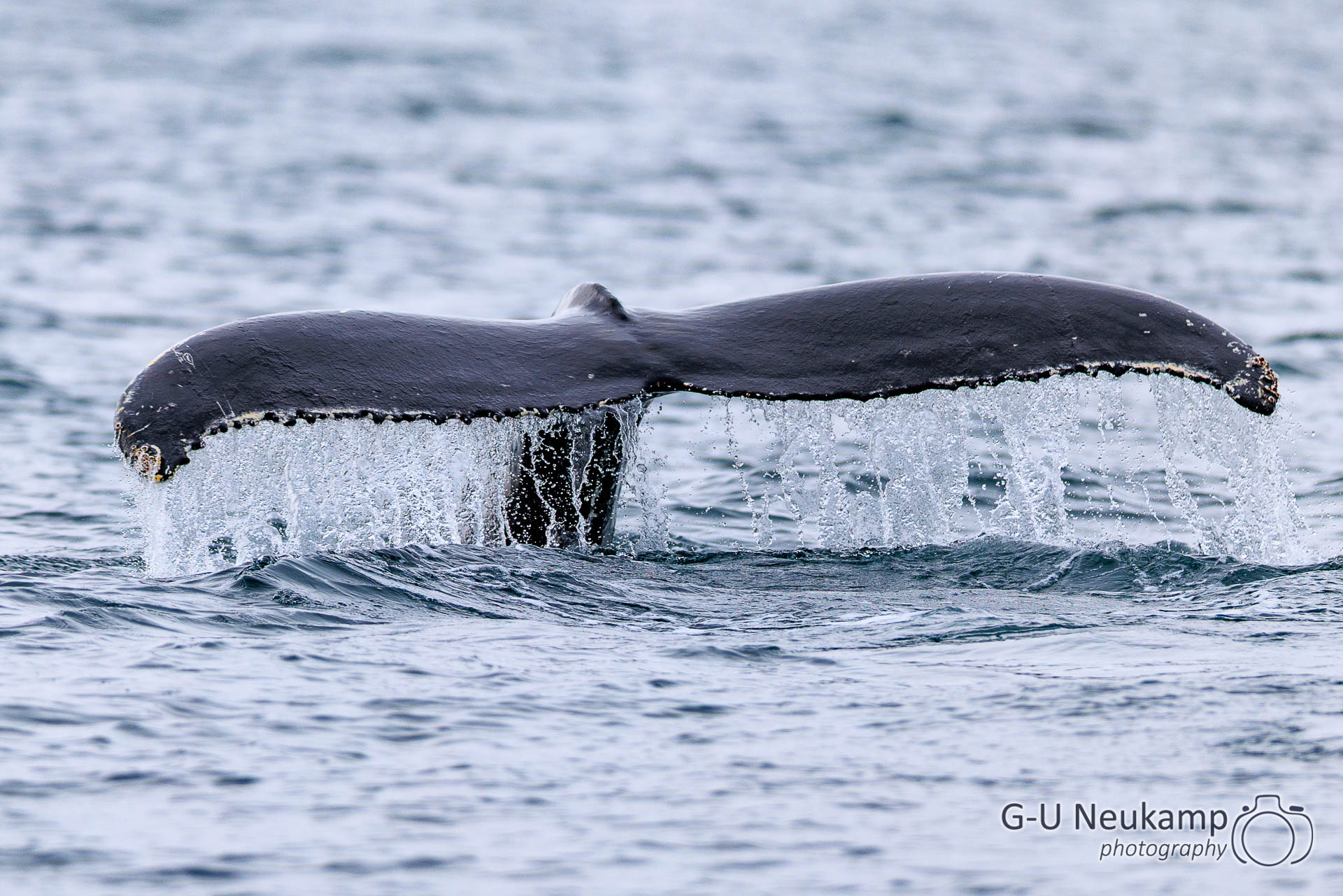
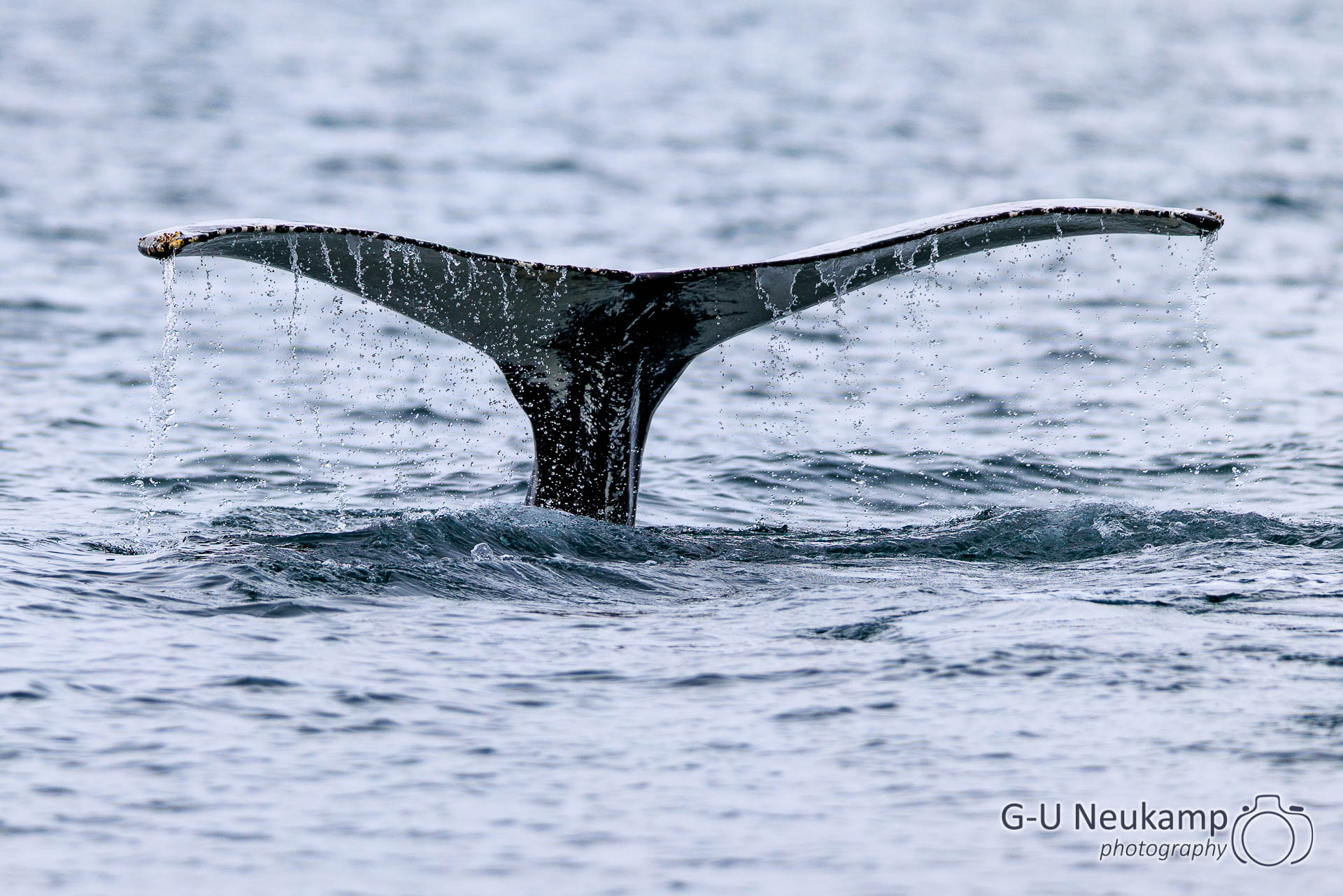
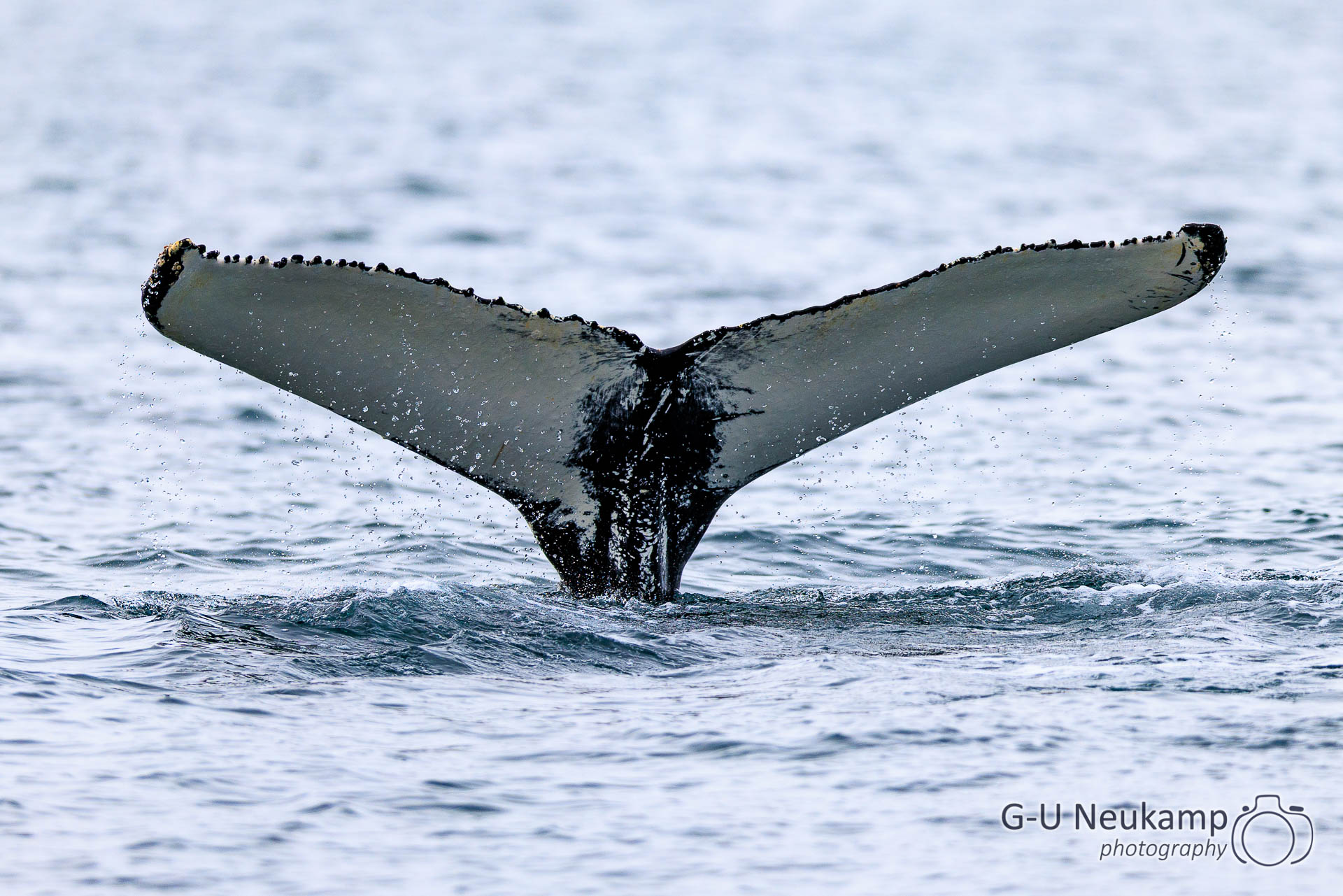
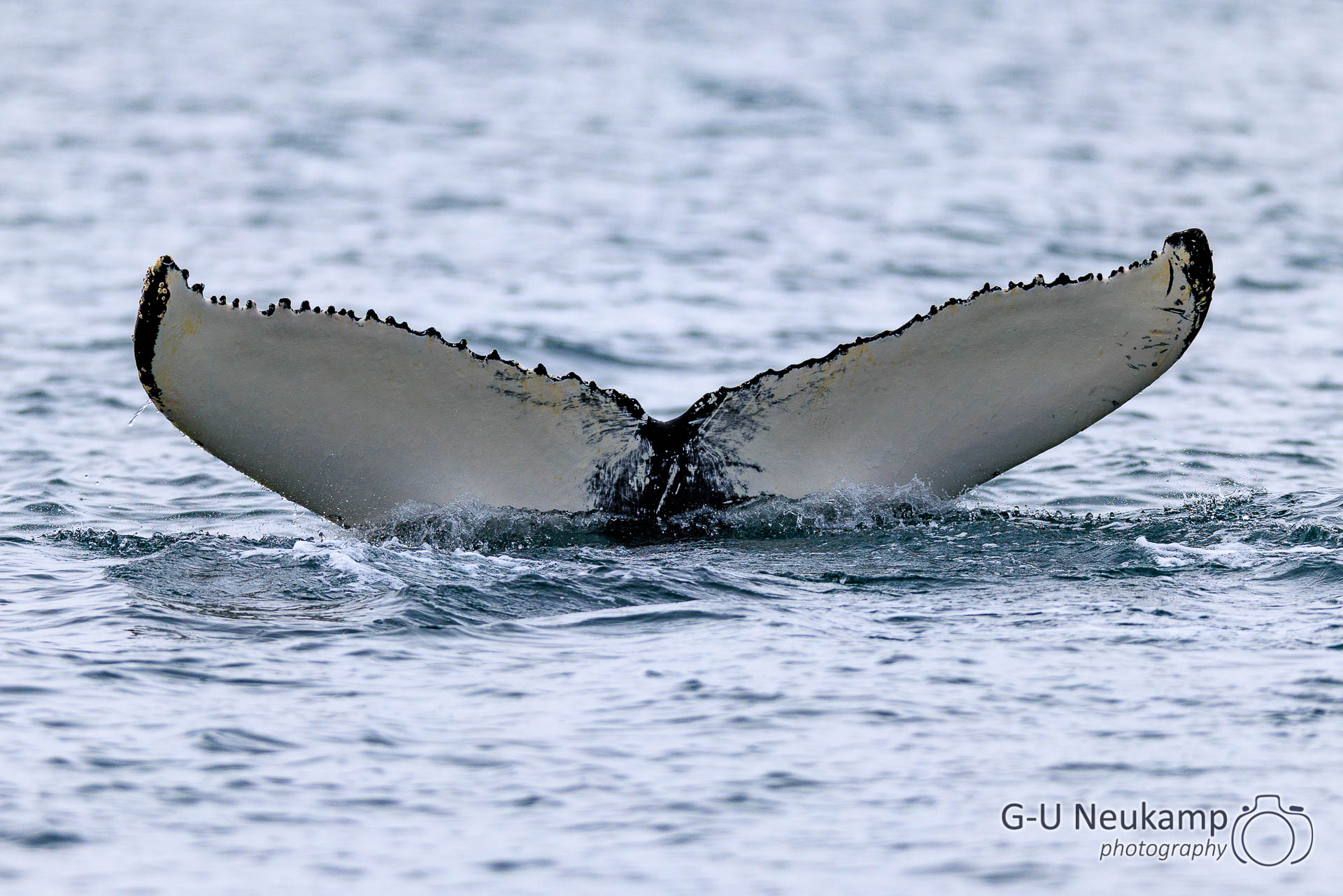
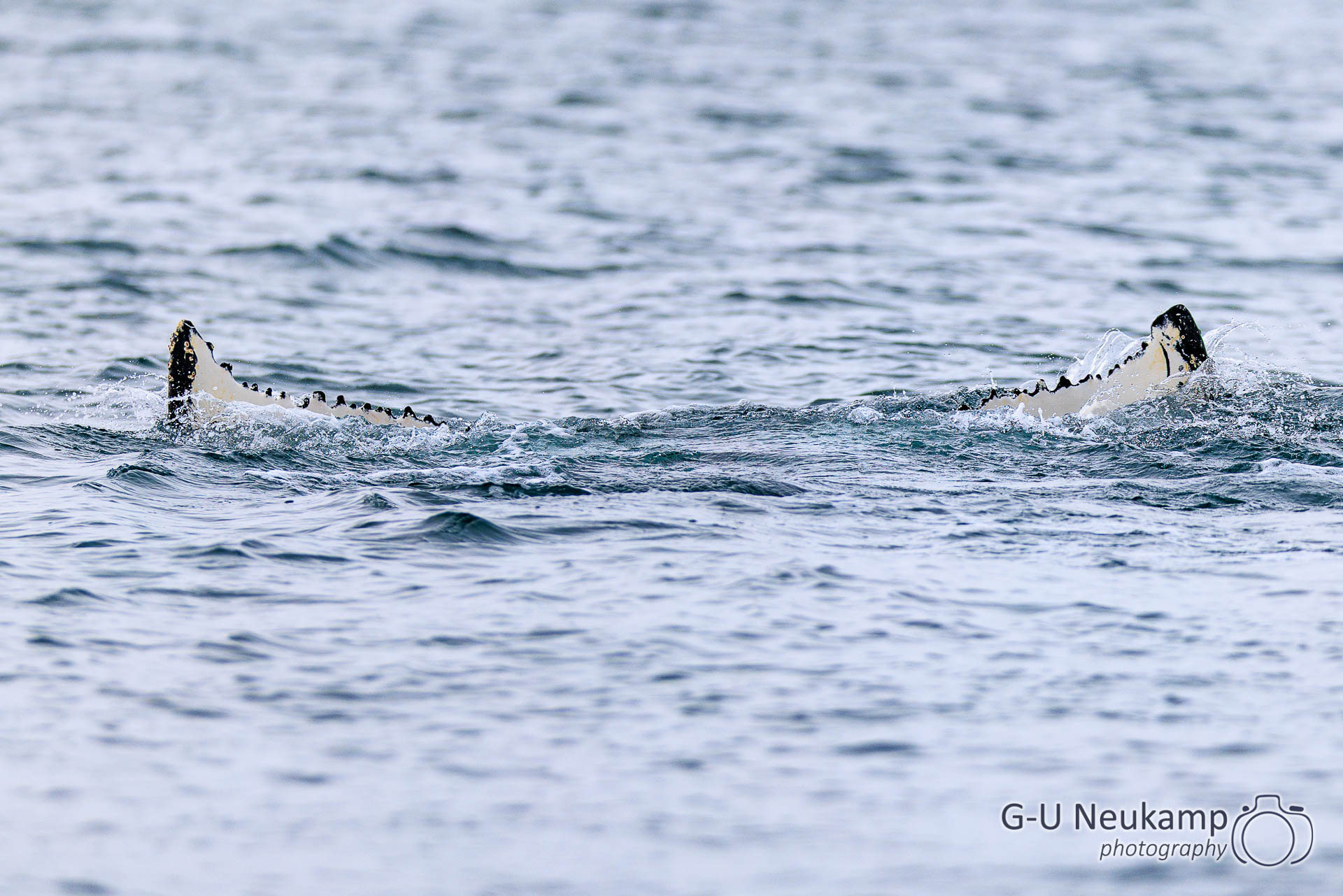
The tour lasted about two hours. Afterwards, we were taken back to Akureyri by minibus and then continued eastward in the camper. Our next destination was an old church, the Gröf turf church (Icelandic: Grafarkirkja). It is located off the ring road in the middle of nowhere and was therefore not very crowded.
The little church was built in the late 17th century, probably under the influence of Bishop Gísli Þorláksson. This makes it one of the oldest surviving buildings in Iceland. Nevertheless, its future was uncertain for a long time: from 1765, on the orders of the Danish king, it was no longer allowed to be used for religious services and was even supposed to be demolished. Instead, it survived as a simple storage room until the National Museum acquired it in 1939 and finally had it restored in 1950. In 1953, it was ceremoniously re-consecrated.
The building itself is a little gem: just over six meters long and barely more than three meters wide, it can accommodate 25 people. The walls are made of thick layers of turf, and the roof is covered with sod. Particularly worth seeing are the baroque-style altar, ornate carvings, and colorful murals, which were restored by the painter Vigdís Kristjánsdottir.
One special feature makes the Gröf turf church unique in Iceland: it stands in the middle of a ring-shaped cemetery whose walls date back to the 17th century.
As we arrived at the church, the sky had closed in, but this created a magical lighting atmosphere. The drone was also put to use again:
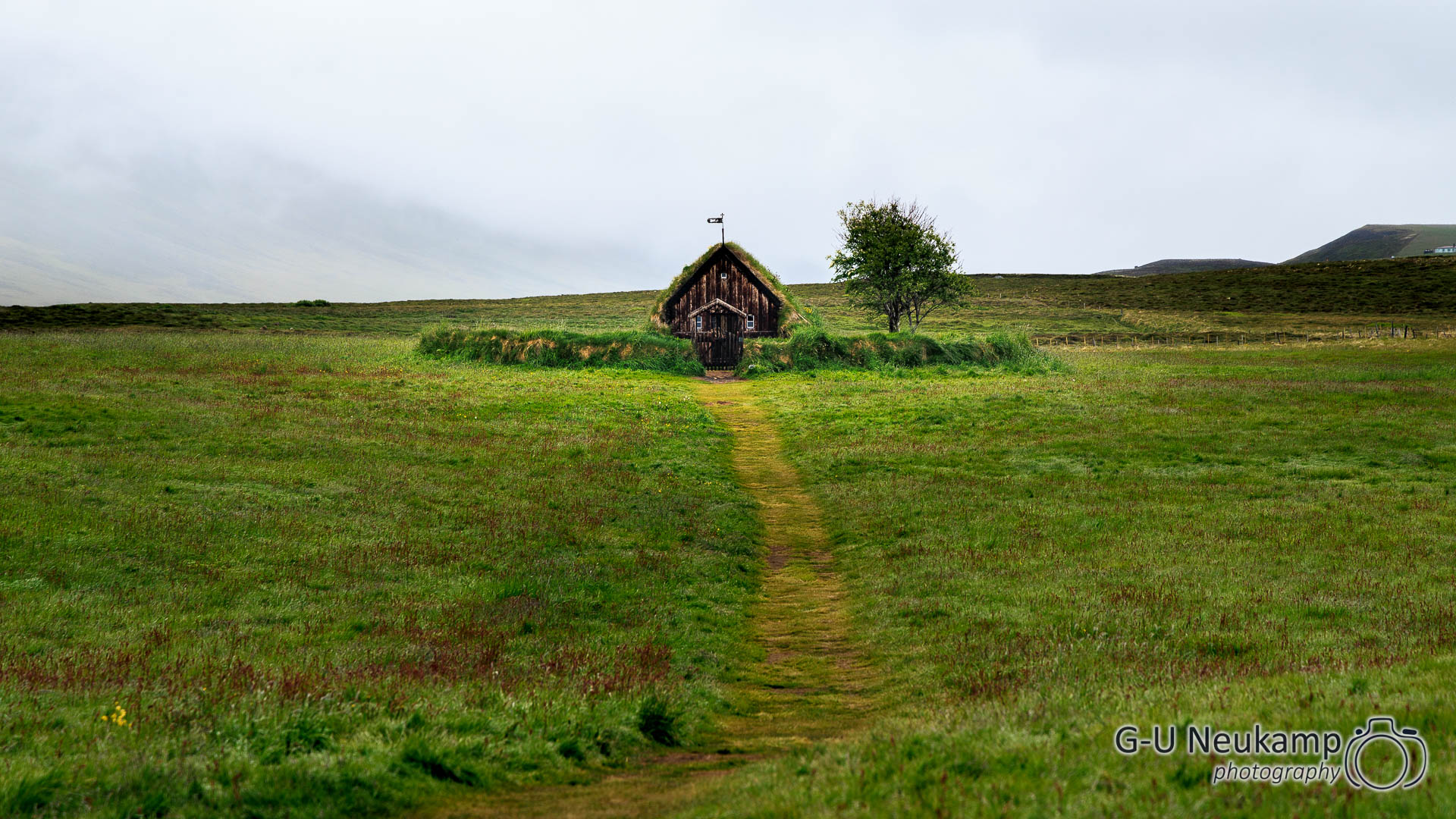
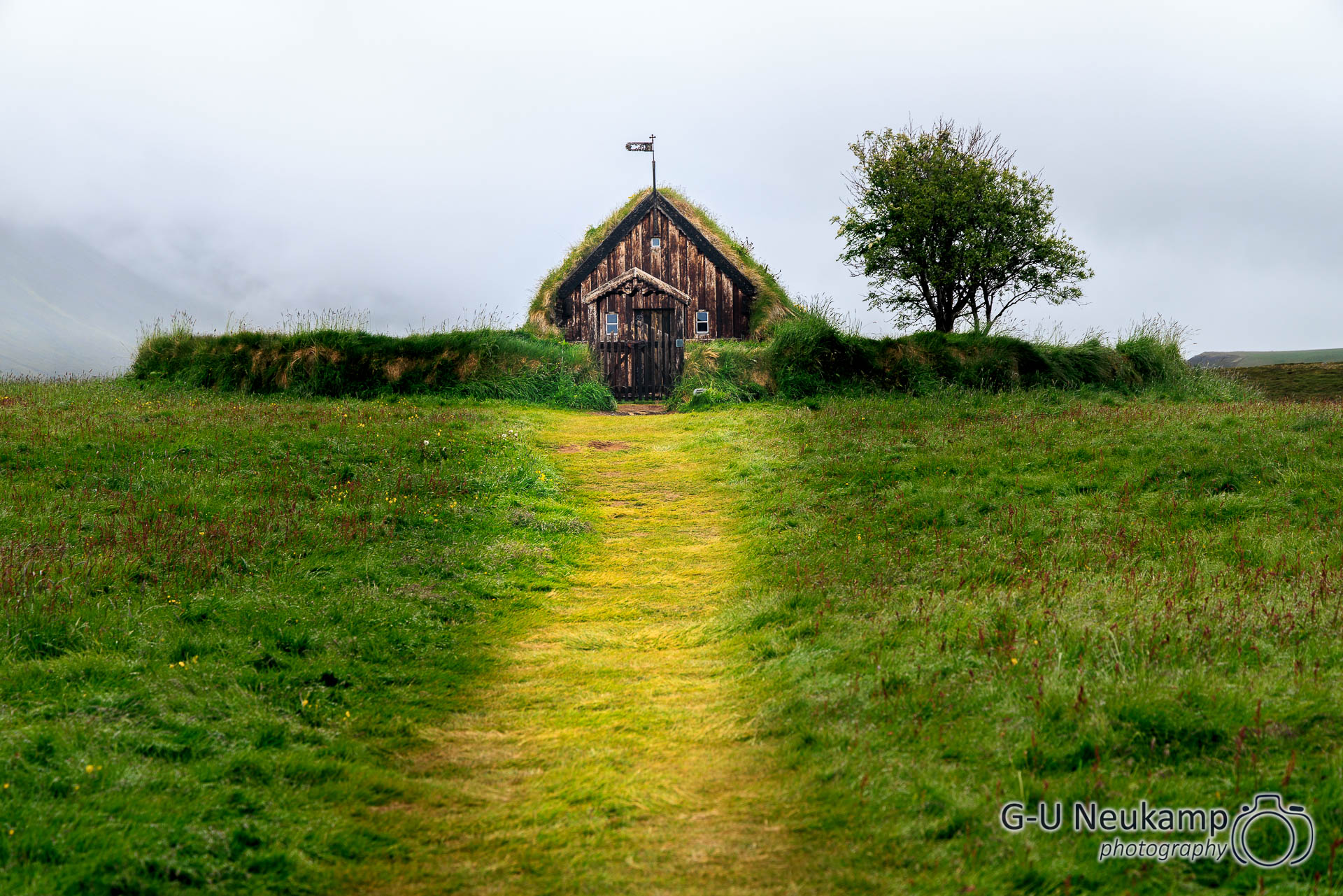
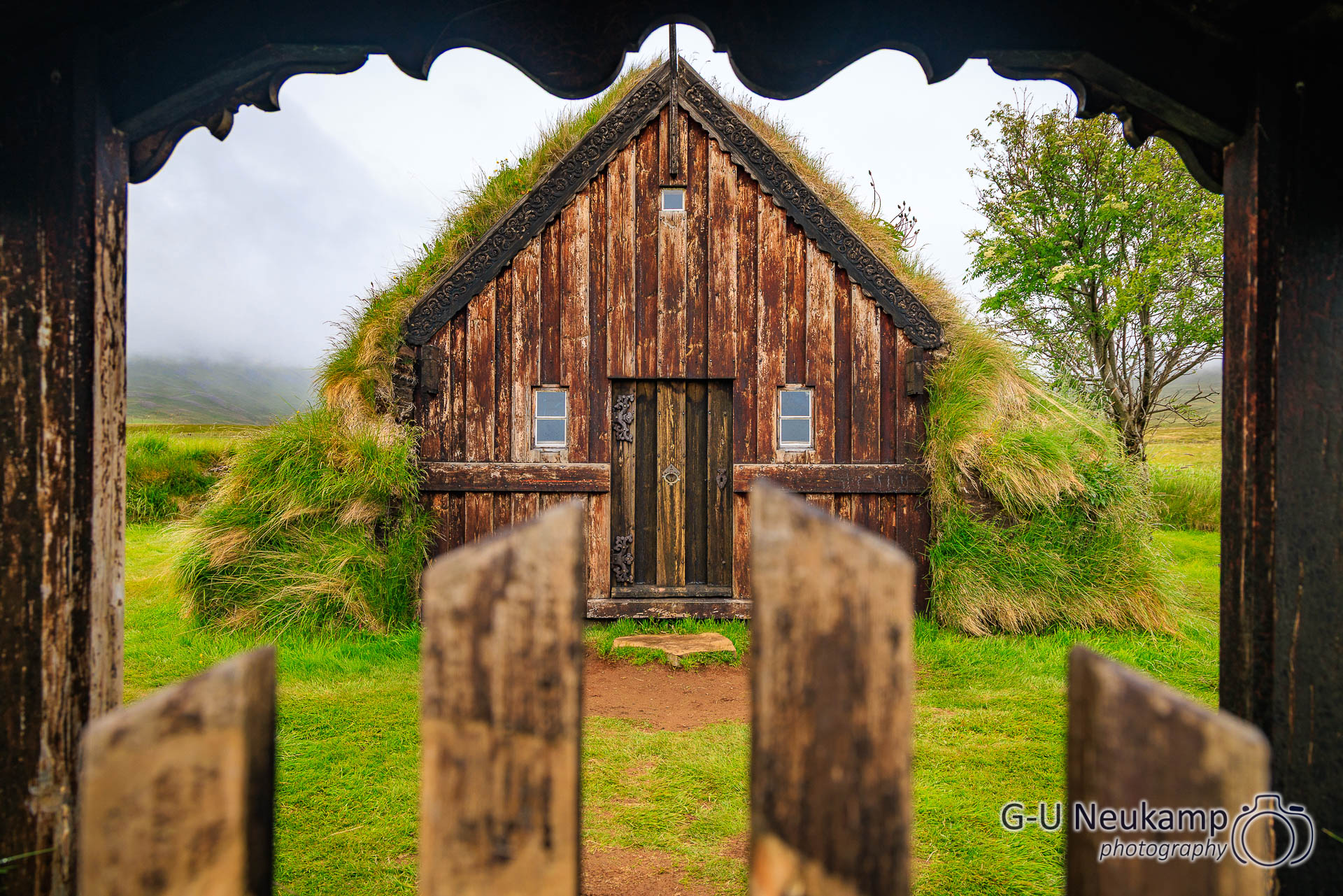
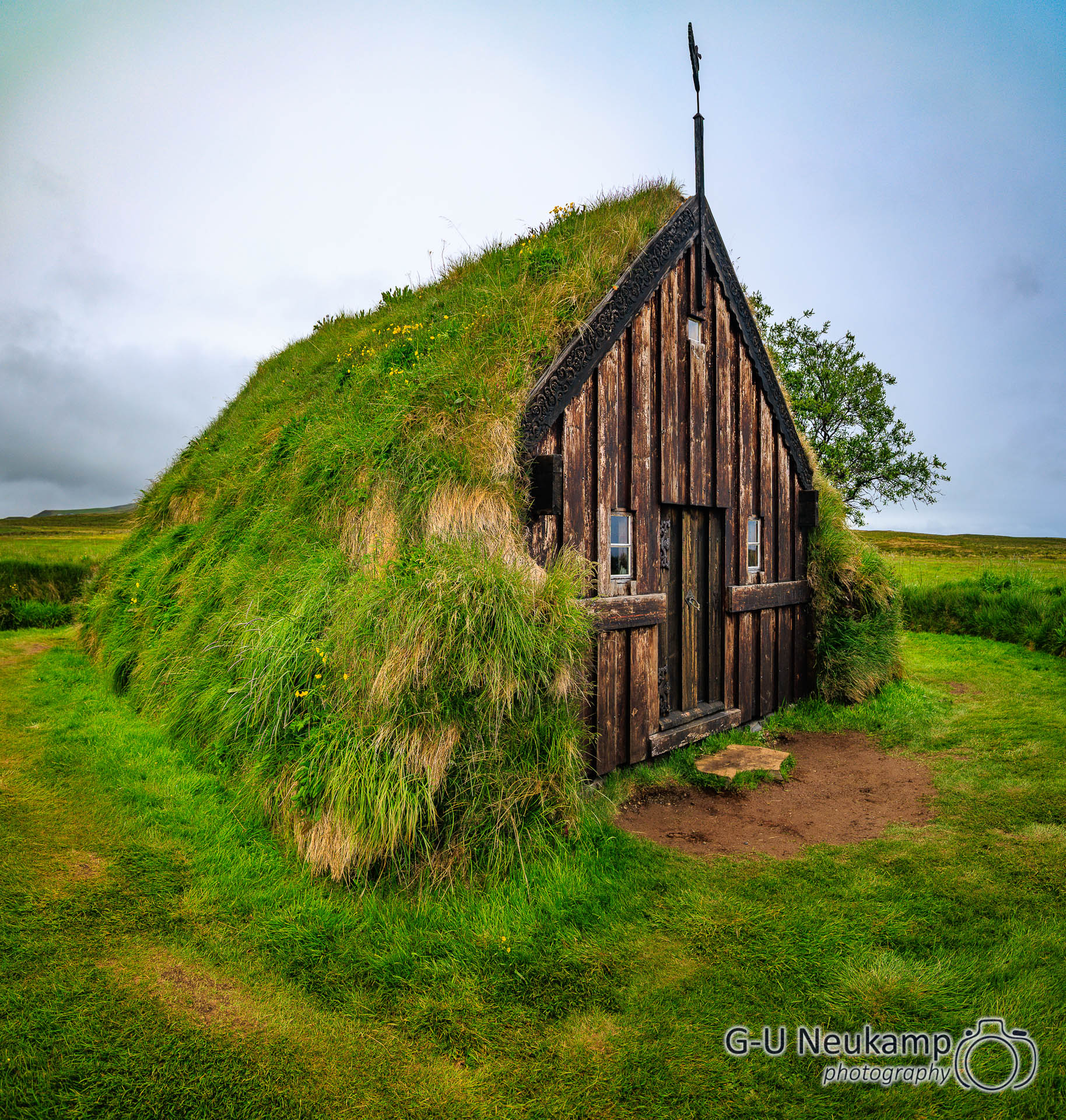
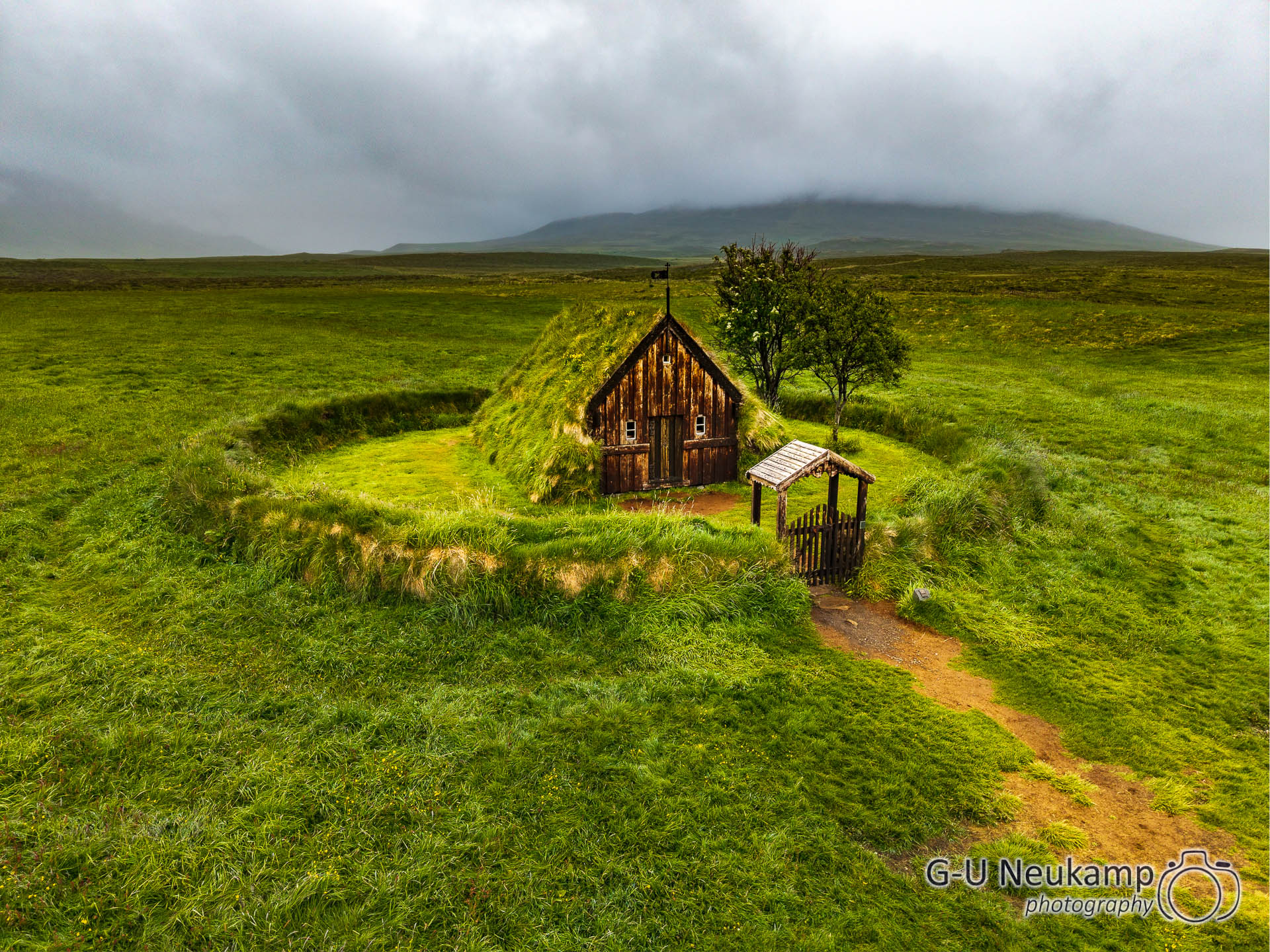
We then continued west to Kolugljufur, a canyon with a waterfall. On the way there, we spotted some Icelandic horses with foals by the side of the road. Although we had seen them many times during our tour, we had never had a good opportunity to photograph them. Now there was a parking space for our large camper, which we took advantage of. Below are some photos of these beautiful animals:
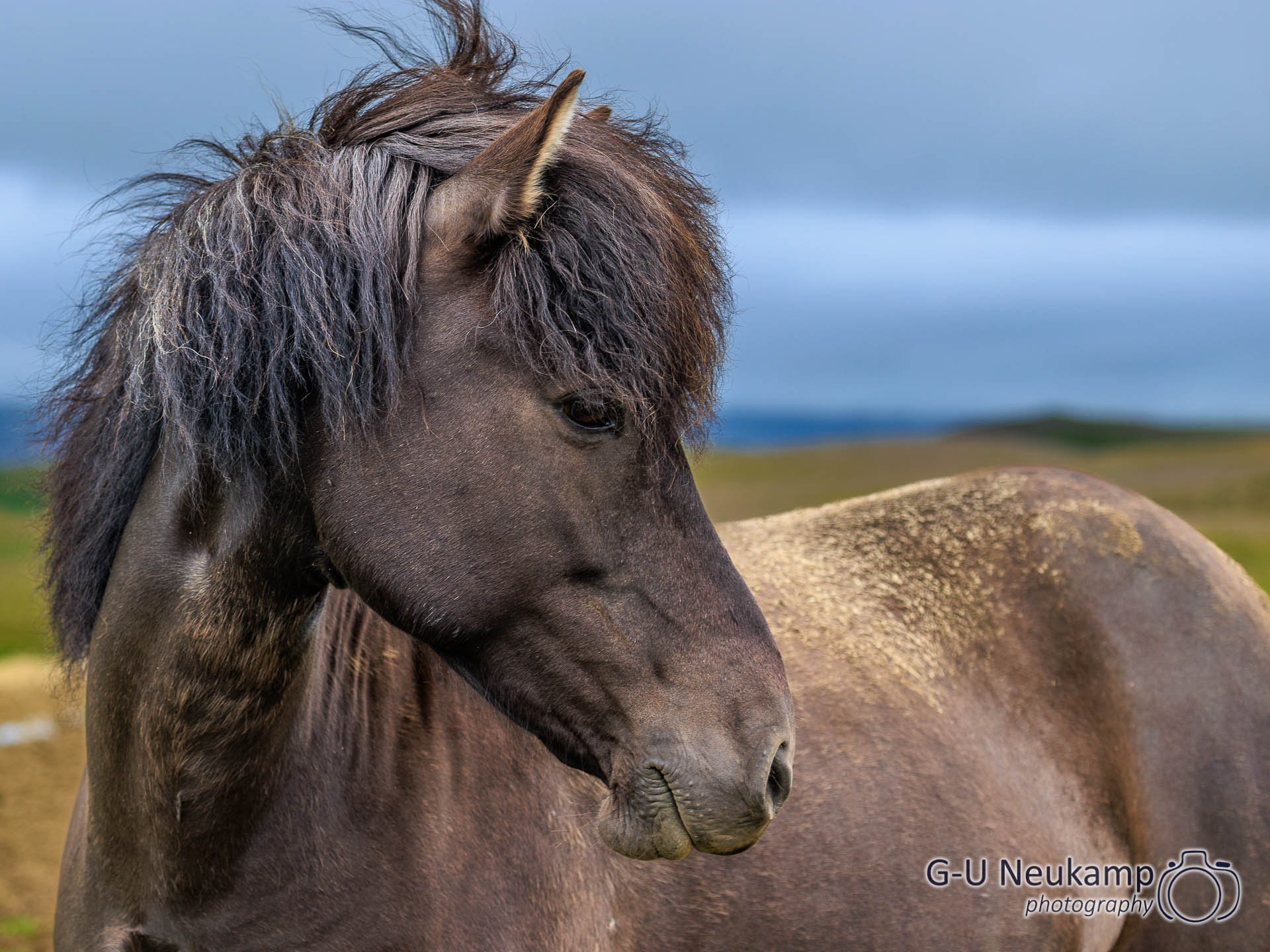
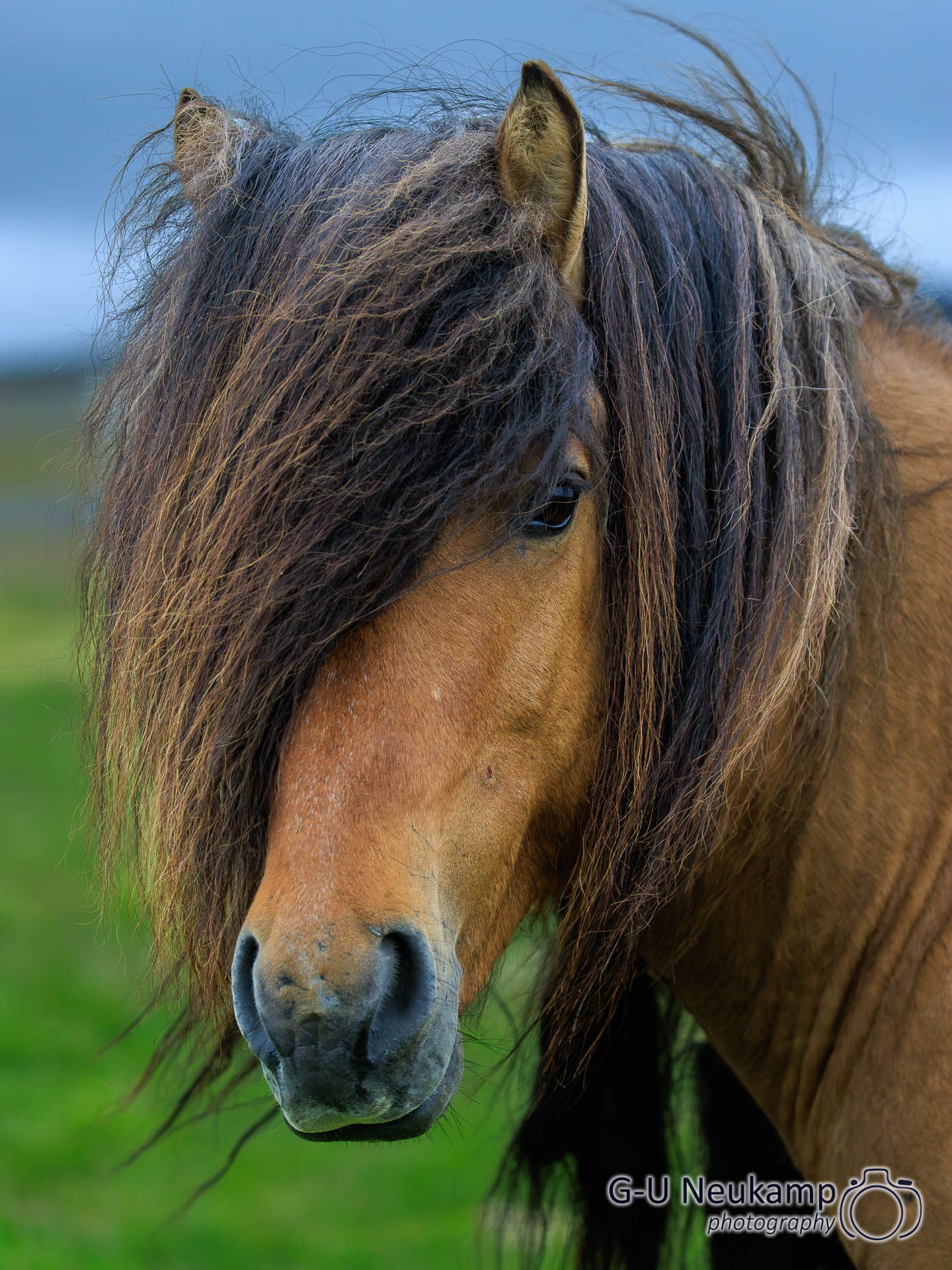
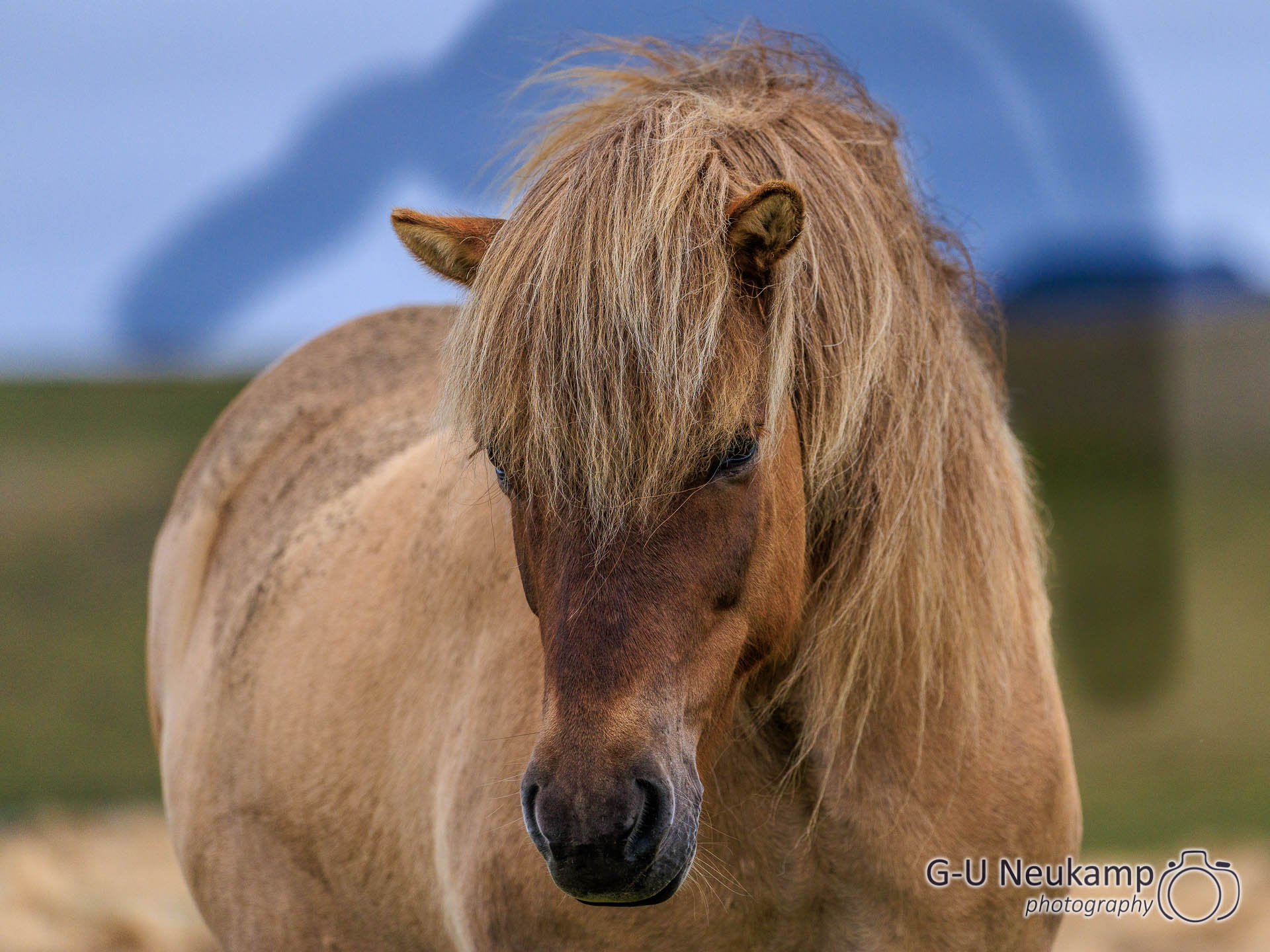
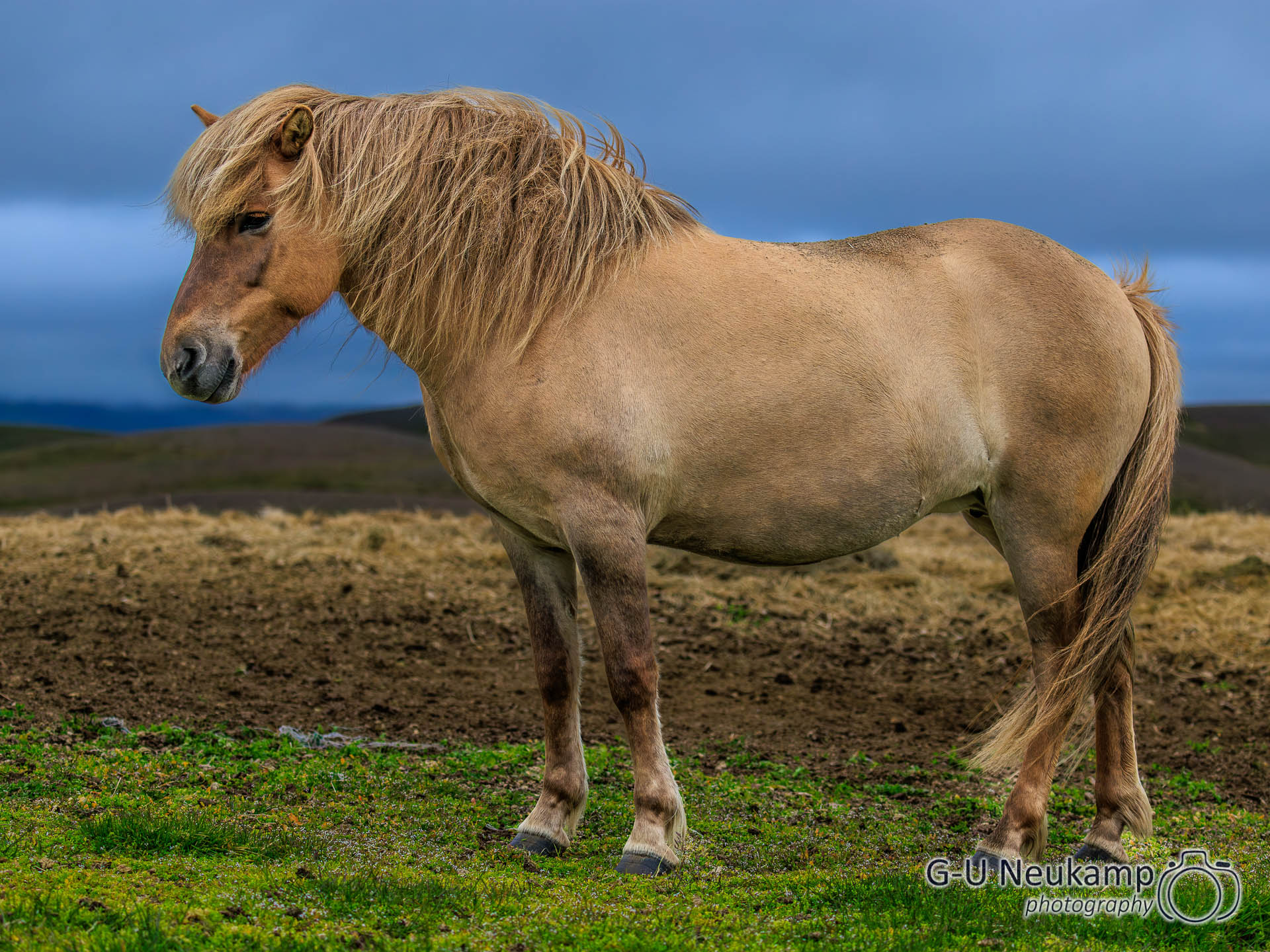
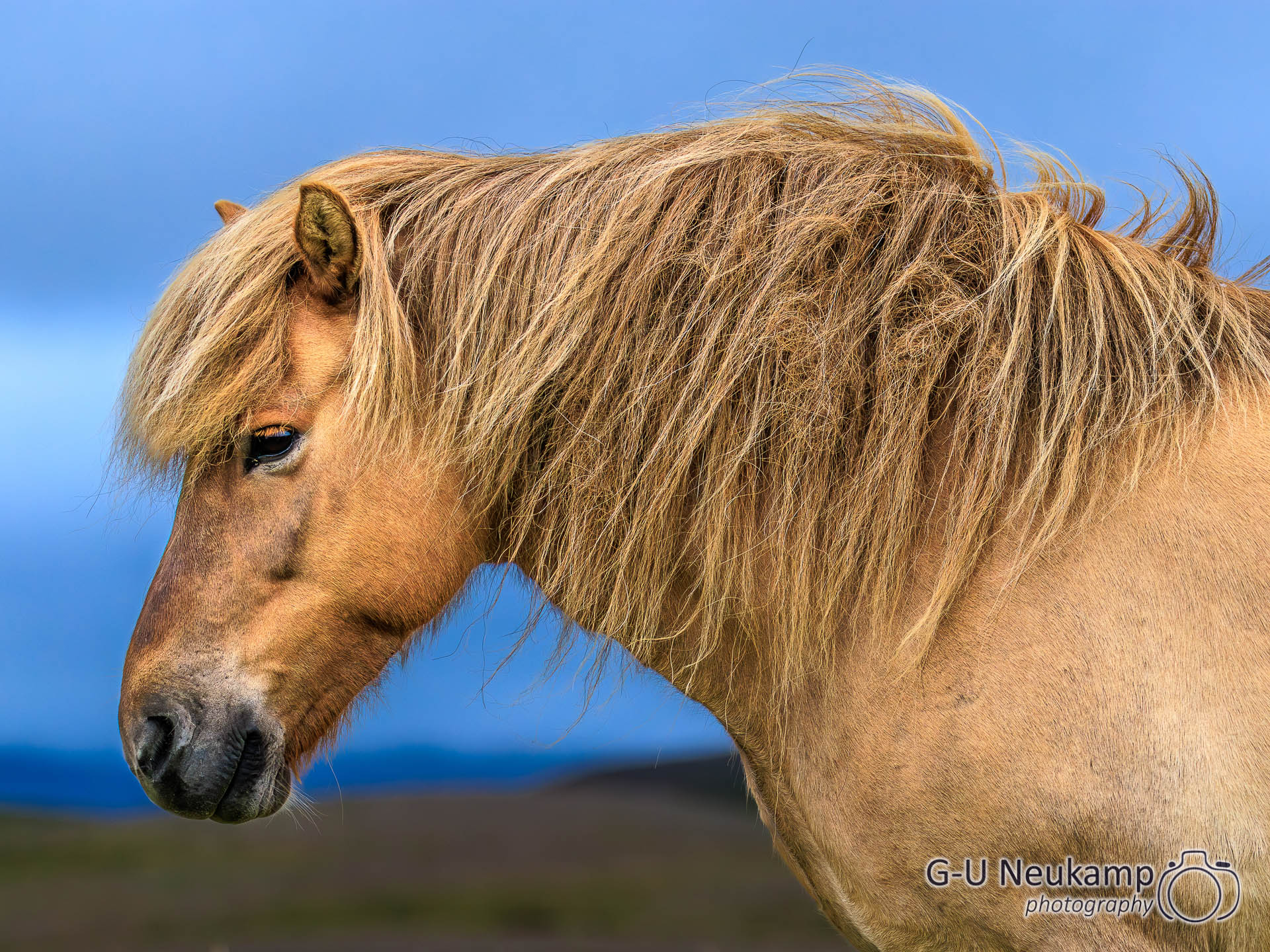
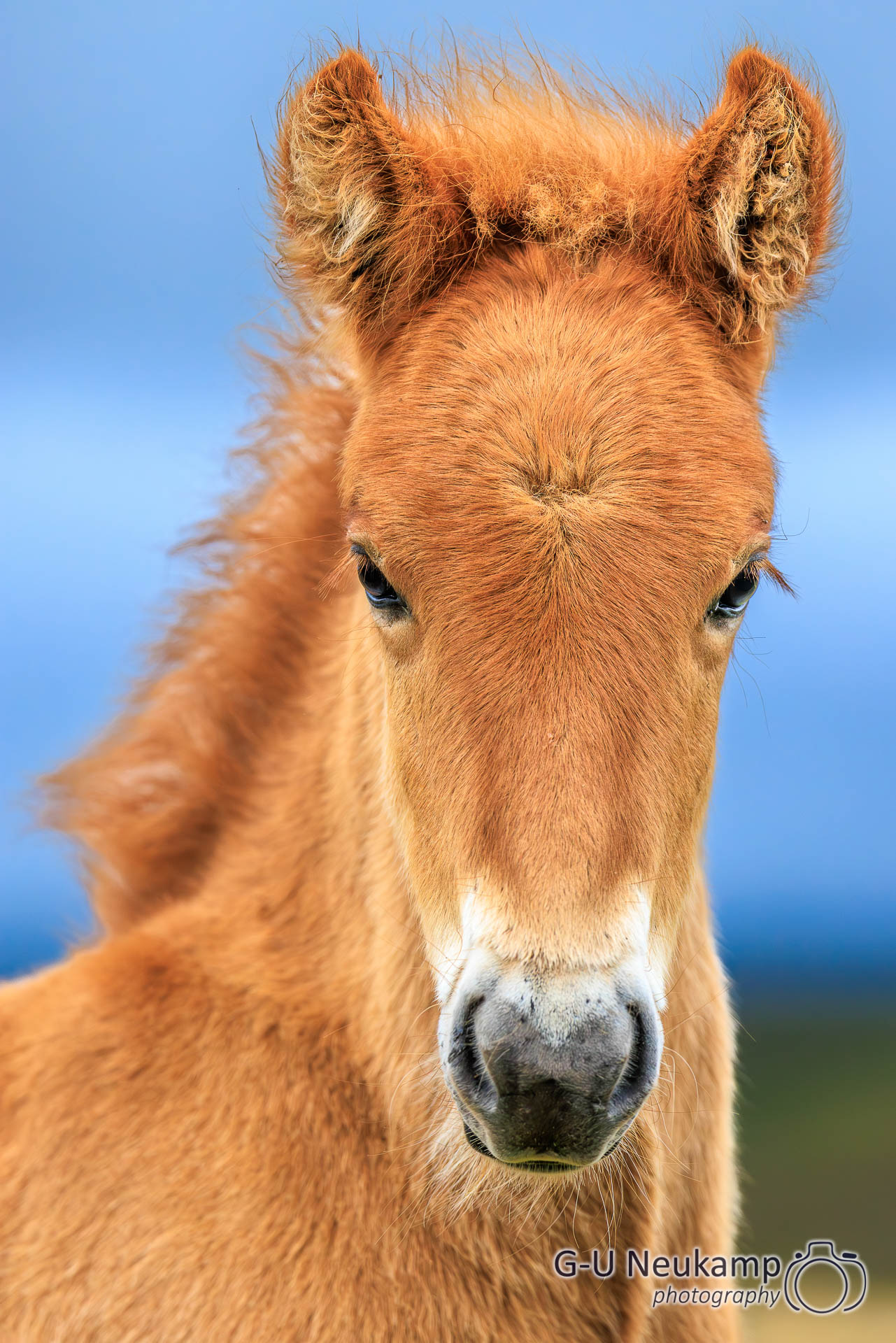
The Icelandic horse is truly unique: small, robust, and incredibly versatile. Although it is often referred to as an “Icelandic pony,” its powerful build means it can easily carry adults.
Its characteristic feature is its special gaits. In addition to walking, trotting, and galloping, all Icelandic horses master the famous tölt, an extremely comfortable four-beat gait that is genetically ingrained in them. Many can also perform the fast pace - a real highlight in competitions.
Breeding is particularly strict: only horses without any crossbreeding may be called “Icelandic horses.” And a unique detail ensures that the breed remains so pure: no horses may be imported into Iceland – and once they have left the island, they may never return.
At around 5:30 p.m., we reached Kolugljufur Canyon with its multi-tiered waterfall. This is also located off the ring road and was therefore much less crowded:
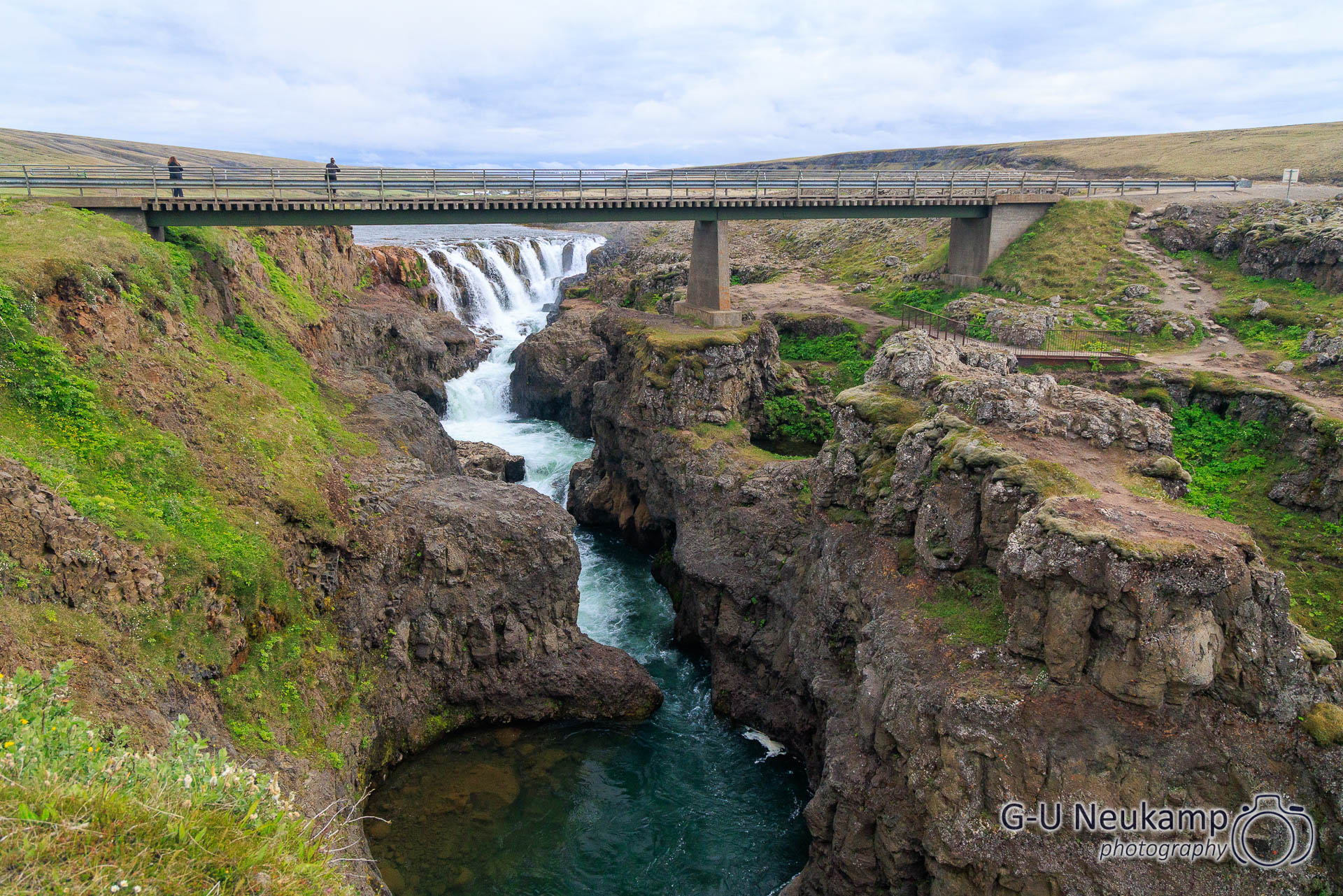
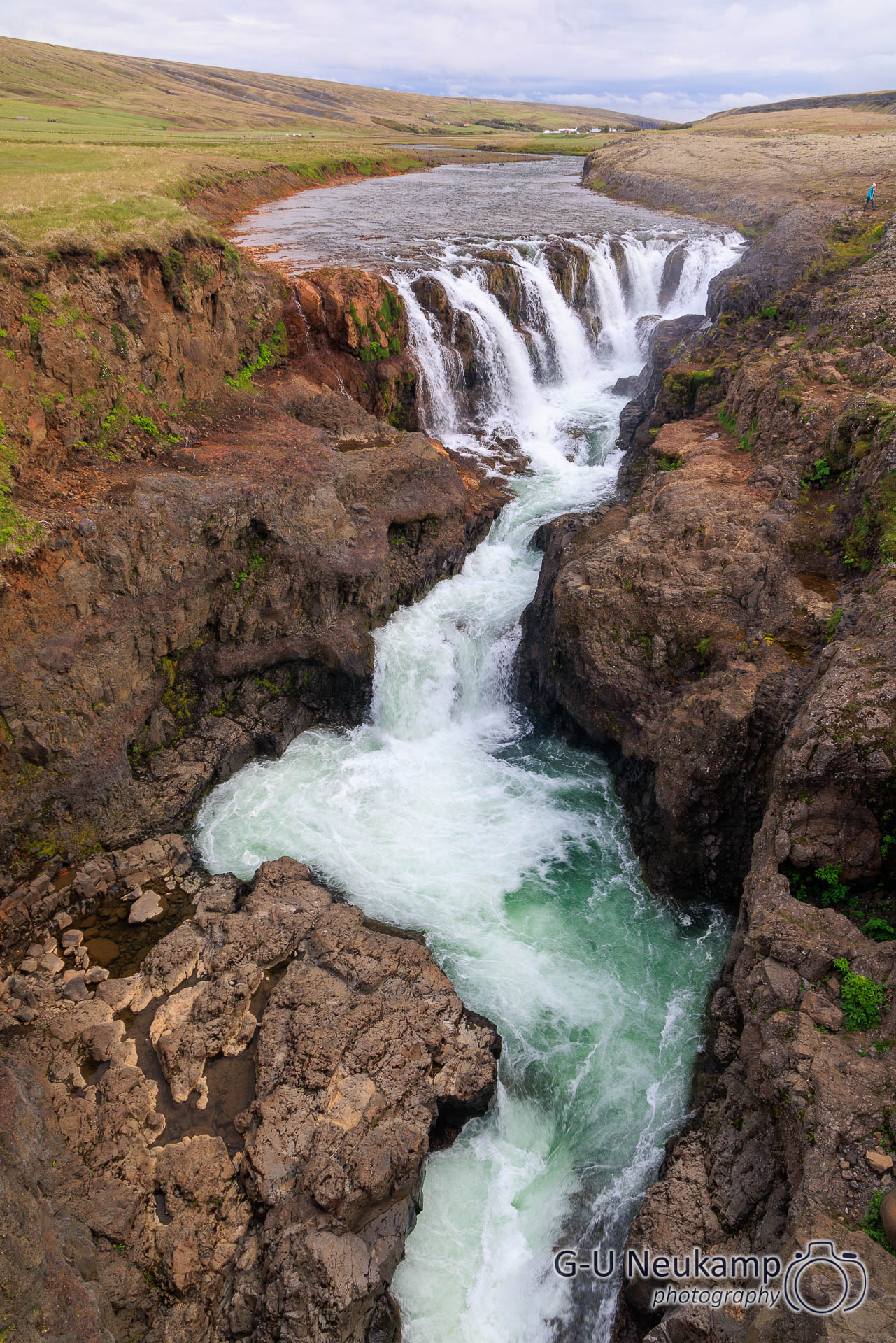
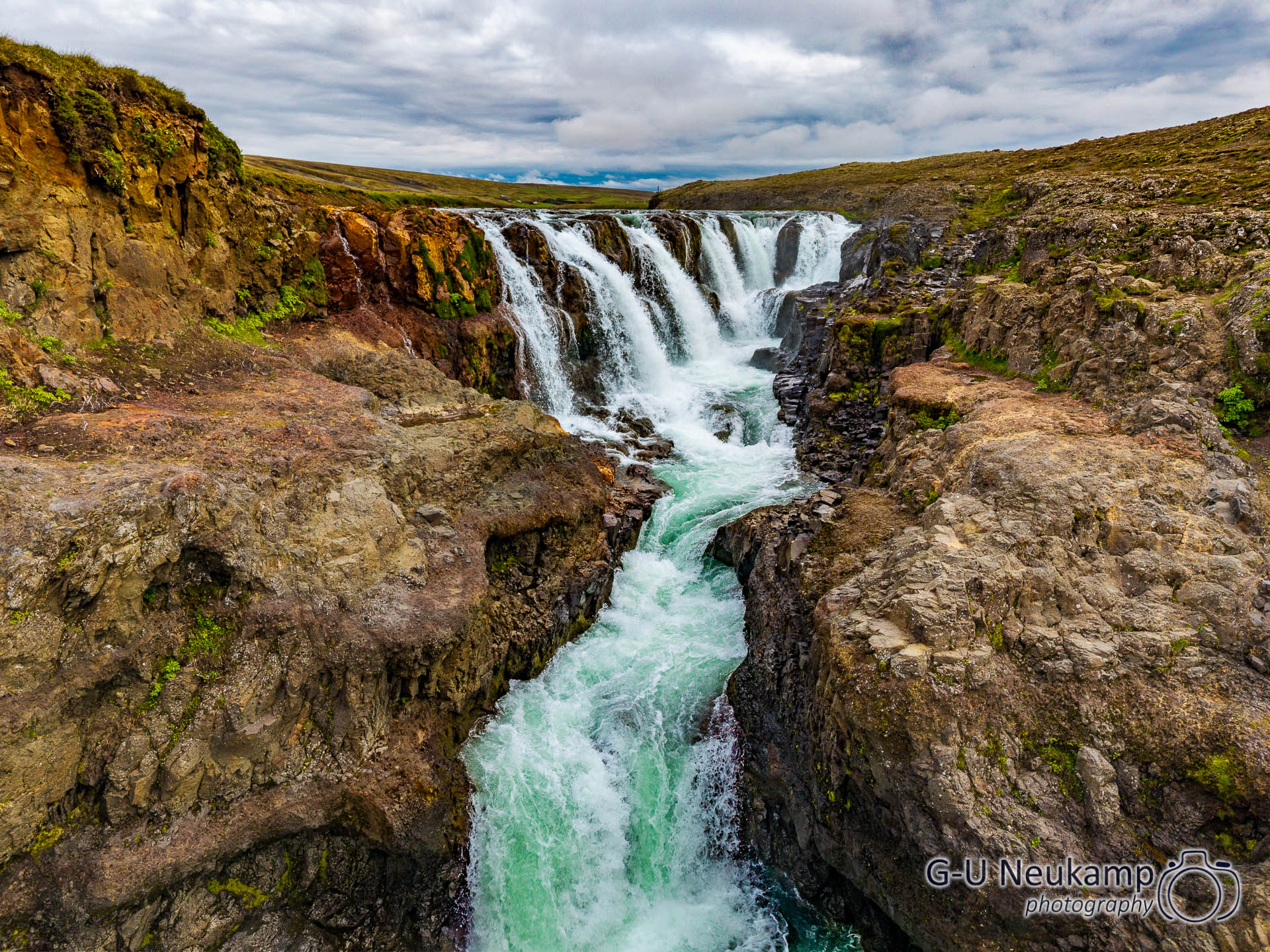
Die Schlucht Kolugil wurde vom Fluss Víðidalsá in die Landschaft gegraben – und gleich drei Wasserfälle stürzen hier in die Tiefe: der Efrifoss, der Kolufoss und der Neðri-Kolufoss. Ihren Namen verdanken sie der Sagengestalt Kola, einer Riesin, die der Legende nach in der Schlucht lebte. Besonders eindrucksvoll ist der Blick von der kleinen Straßenbrücke über dem oberen Wasserfall: Auf der einen Seite sieht man den tosenden Fall, auf der anderen die enge Schlucht. Erreichbar ist dieses Naturwunder ganz einfach über die Straße 715, die von der Ringstraße abzweigt.
Our next and final photo destination that day was a rhino 😉, the Hvítserkur. We arrived there shortly after 7:00 p.m. The large basalt rock in the sea really does look almost like a grazing white rhino (okay, the horn is on the back of its head, but otherwise?), doesn’t it?

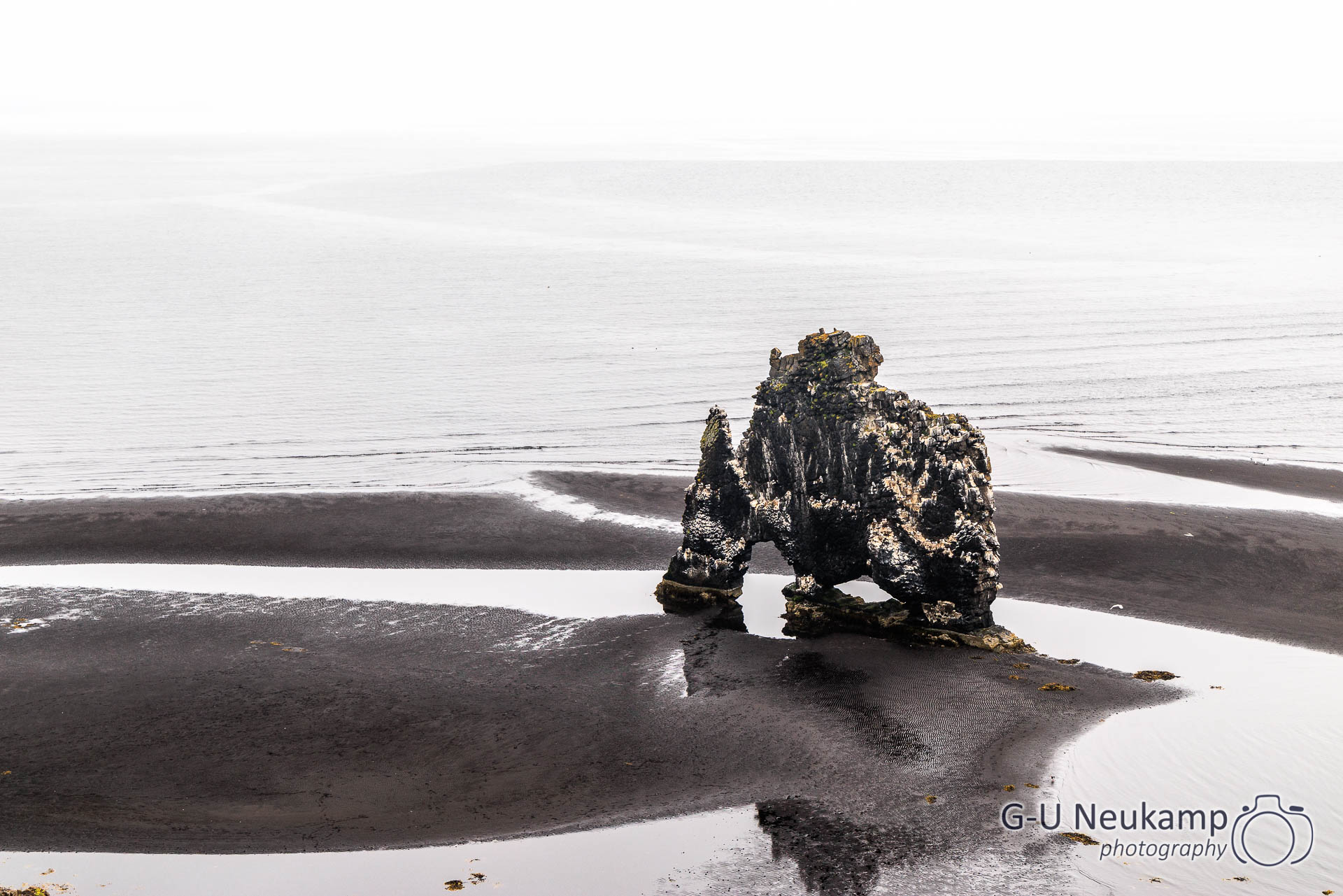
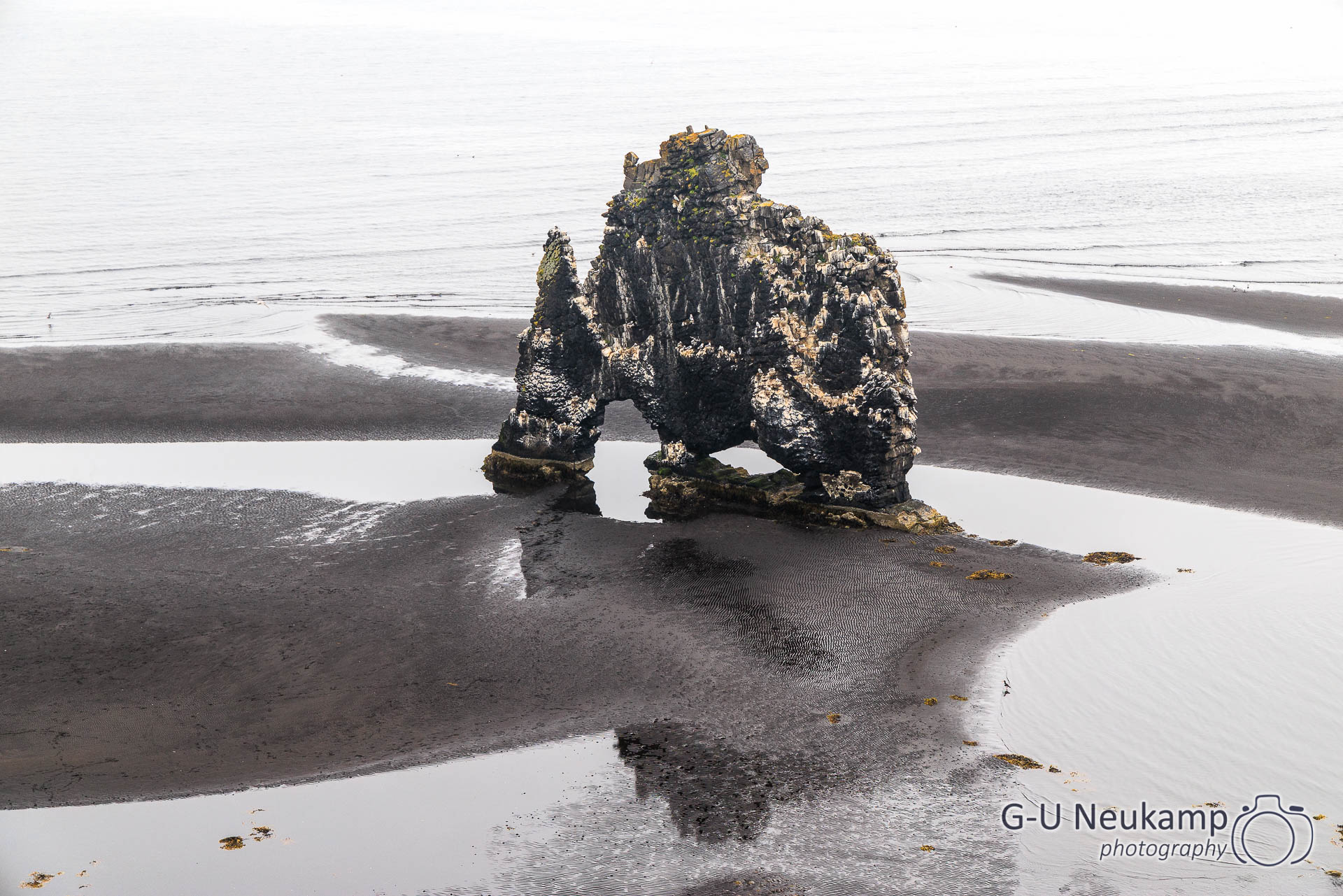
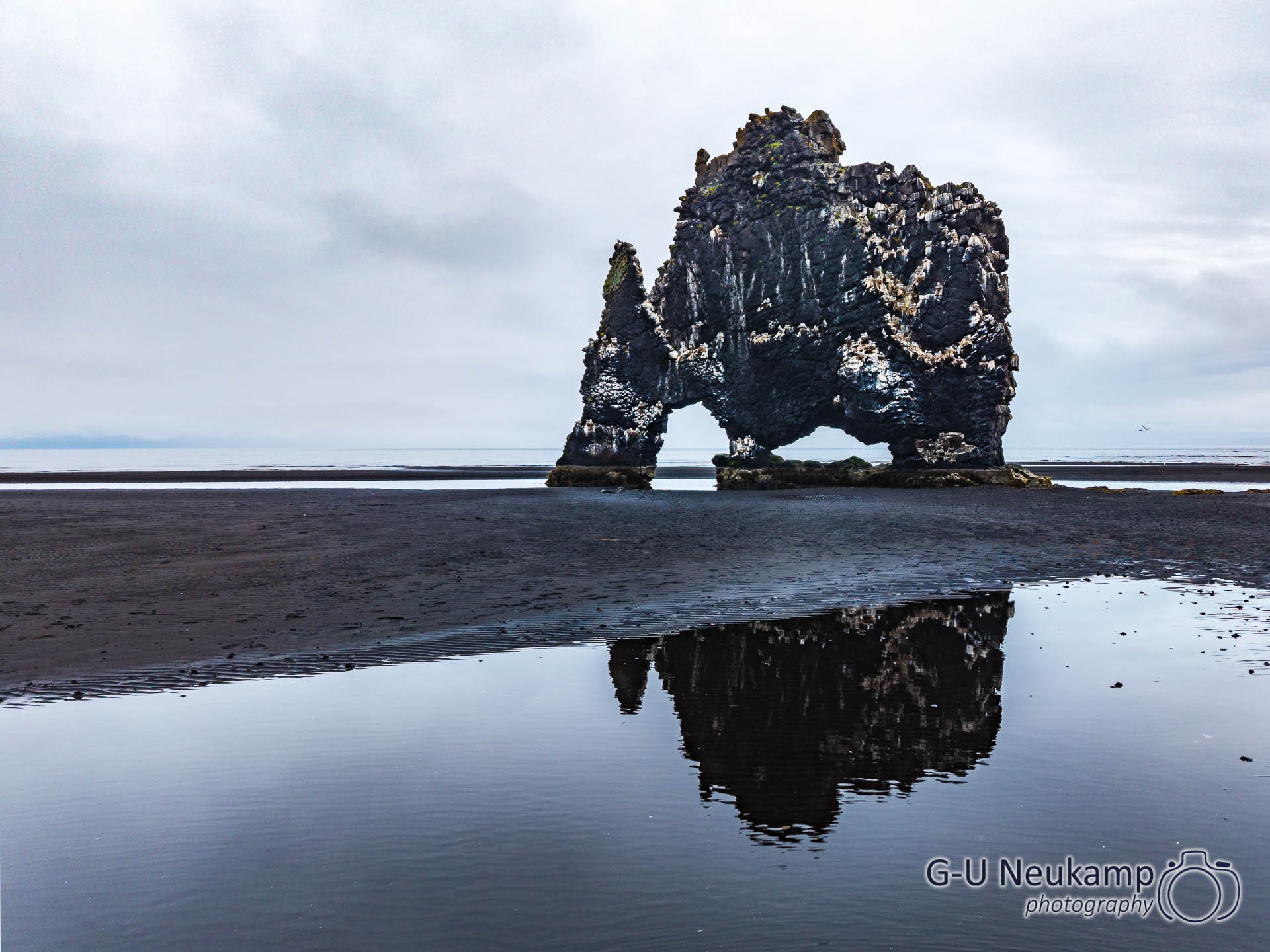
On the east coast of the Vatnsnes peninsula, a bizarre rock rises out of the sea: Hvítserkur, the “white smock.” However, its light color is not due to the rock itself, but to the countless birds that use it as a nesting place—their traces cover the approximately 15-meter-high basalt rock.
Its shape, with its two bulges, is reminiscent of a drinking dragon or a giant animal, making Hvítserkur a popular photo motif. Icelanders, however, tell a different story: it was once a troll who threw stones at the Þingeyrar monastery – until the sun surprised him and he turned to stone.
The striking rock even made it onto an Icelandic stamp in 1990.
As it was already very late, we searched Google Maps for a campsite nearby. We decided to go to the one in Hvammstangi, located to the west on the other side of the peninsula. The campsite was very nice and quiet, but not very big. After dinner in the camper, we finished off the evening with another episode of the Netflix series KATLA.
